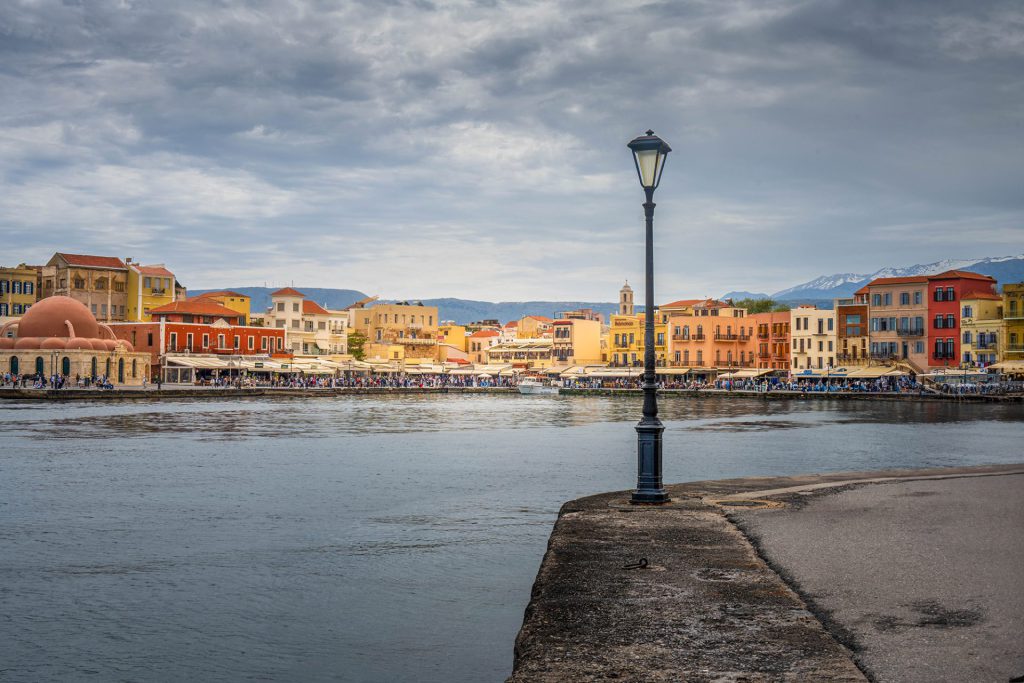
You know that feeling? You’re planning a photo trip to perfection. You’ve been dreaming of magical landscapes, golden morning light, and breathtaking vistas for weeks. The location? Crete – the rugged, sun-drenched island full of contrasts, mountain villages and turquoise bays.
I had everything I needed for this travel photography trip to Crete well prepared, including a list of photo locations that made my mouth water: Balos Beach, Elafonisi, the Gramvousa Peninsula, Samaria Gorge, historic Chania, Lake Kournas, the White Mountains, Souda Bay, and the waterfalls of Argiroupoli. My goal? To capture sunrises, mountains, gorges, and coastlines in their purest, most rugged form.
Expectations were high … and then the unexpected happened.
What we will discuss:
- From walking routes to recovery pace
- Slow photography: switching inside your head and camera
- Crete through other eyes: light, detail, stillness and surprises between the walls
- What lessons do I take away as a photographer?
- The healing power of photography
- Tips for when your photo trip goes differently than planned
- Conclusion: Even the unexpected journey is worth it
From walking routes to recovery pace
Photo travel with limited mobility
A few weeks before departure, my wife, my faithful travel and photography partner, had an accident. She had to undergo hip surgery, and her rehabilitation was still in full swing when we had to leave. Long walks? Impossible. Even simple viewpoints were often too far. Not feasible. To top it all off, the first week we got rain, and later, when it got sunnier, there was a persistent haze in the sky that made the light pale and the skies flat. Even the waterfalls of Argiroupoli were disappointing; more water ran over the road than through the waterfall. Not exactly the recipe for epic landscape photos.
In my blog, on the weather and landscape photography, you can learn how to deal with different weather conditions.
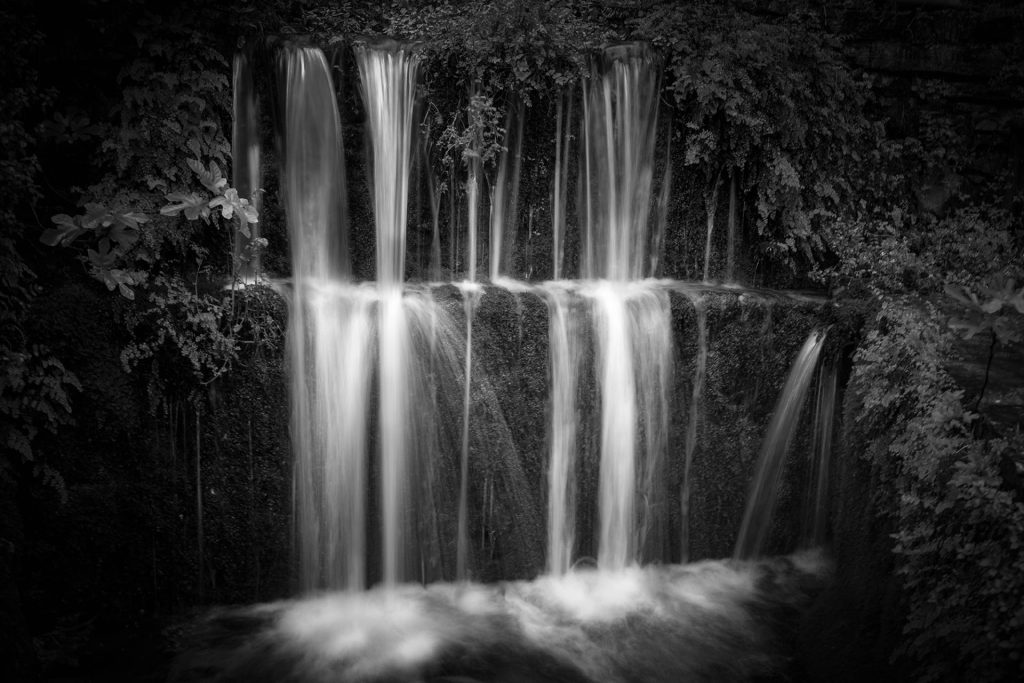
Honestly, at first, I was a little disappointed. There had been so much preparation and so many expectations. So, what do you do as a photographer? Quickly, I realised I had two choices: Put everything away and bail, or embrace the situation and change my outlook.
Slow photography while travelling: switching inside your head and camera
The camera did not go into the closet—quite the contrary. I switched to slow photography—slow, observing, in the rhythm of circumstances. Instead of golden hours on deserted beaches or brisk walks along mountains or gorges, it became strolling through Chania and Rethymnon. I discovered the charm of shadows on facades, a cat in a restaurant, colourful shutters, or a dove in a pool of water.
Even the images I could take from along the road took on meaning like a lonely tree on a rocky slope, or a chapel in the middle of the sea during a rainy session. The atmosphere, the silence, and the poetry of the moment became central. I took my time. And precisely because of that, I saw more.
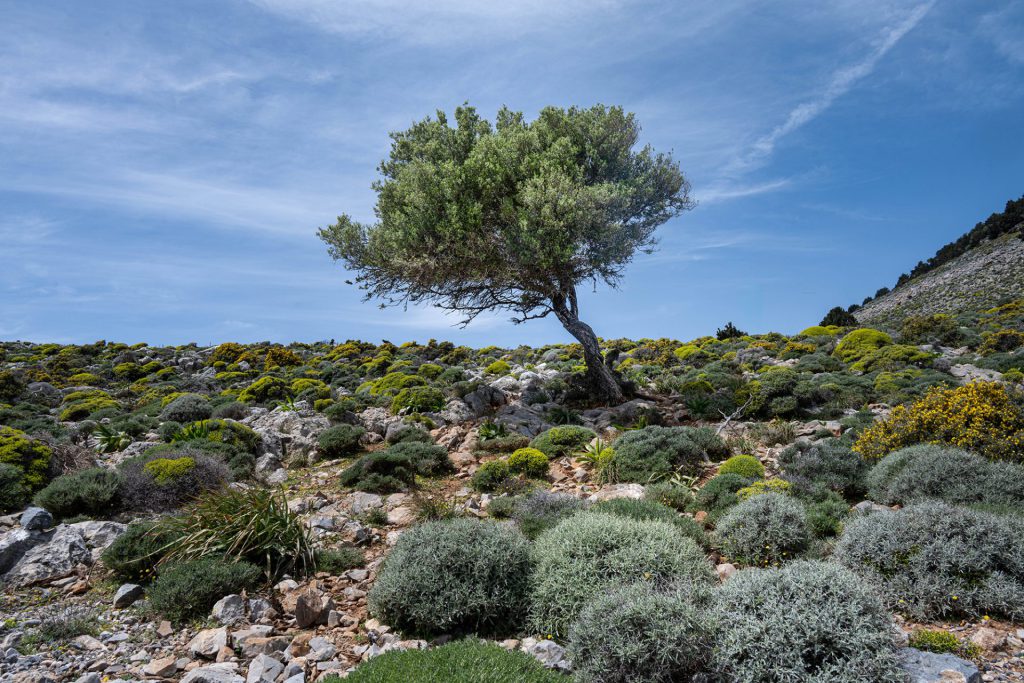
The focus shifted from vast panoramas to intimate moments, and street and travel photography replaced typical landscape work. And that felt surprisingly good.
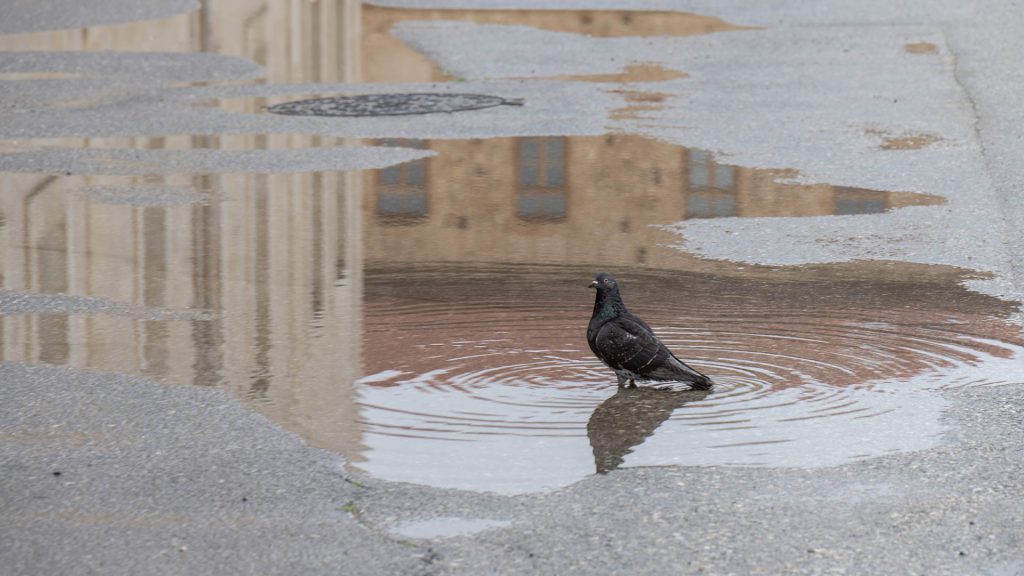
Crete through other eyes: light, detail, stillness and surprises between the walls
What struck me was that I stayed in one place longer because I could not move around as usual. And precisely because of that, I saw so much more. The quietness brought space for observation. I did not suffer from the classic “photographic restlessness”—the feeling that something might be better behind the next corner.

I spent hours looking, waiting, and clicking in Chania’s old port. In the alleys of Rethymnon, too, I tried to capture the atmosphere of a place where past and present live side by side. These are images I might never have made without this turn of events.
The photographs in this series are different from my usual work—less grand and more subdued. But they tell, perhaps more powerfully, what it was like: the day’s rhythm, the place’s atmosphere, and the peace that came when I stopped looking for “the perfect shot.”
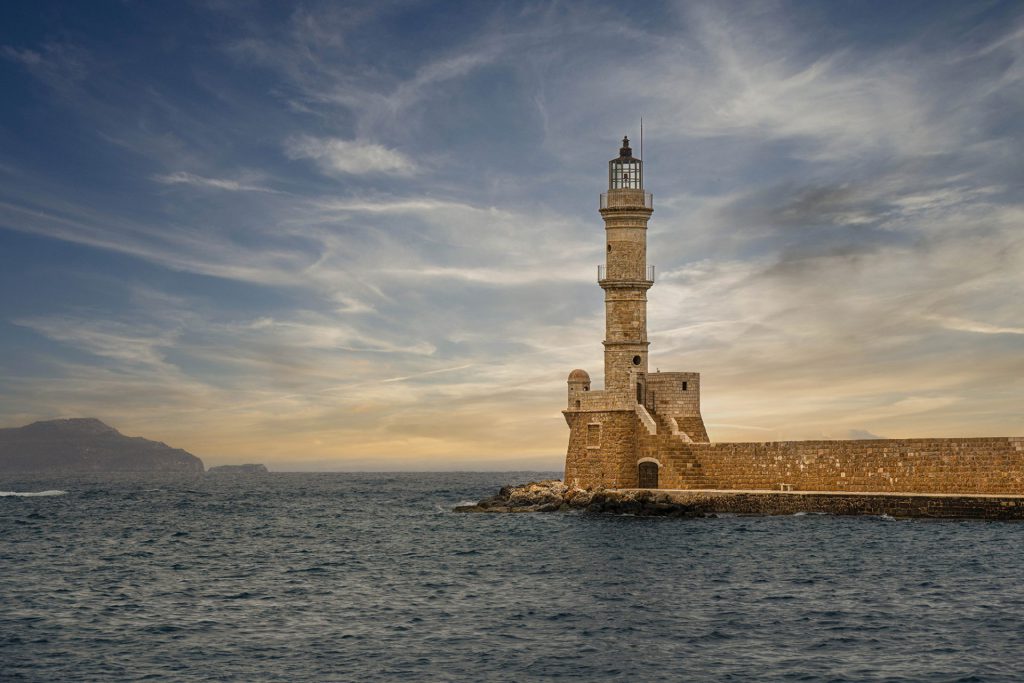
What lessons do I take away as a photographer?
On this trip, I used my full-frame Nikon Z7II with a 28-200mm lens—a faithful travel companion that is flexible and lightweight. That versatility allowed me to switch quickly between details and more expansive scenes, and I didn’t have to lug a tripod with me.
In post-processing, Lightroom, Photoshop, and Luminar Neo came in handy, especially to give the faint skies some character.
But I learned most of all that photography is also about acceptance, being present, and the art of letting go: it is not about the perfect picture but about seeing what is there, not what I hoped for.
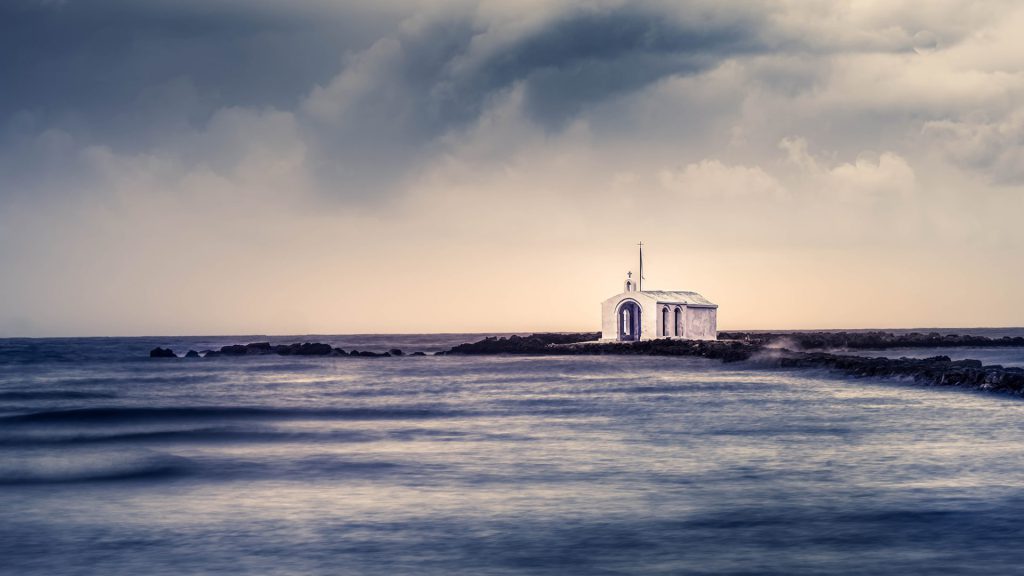

I discovered a different side of Crete and, perhaps more importantly, another side of myself as a photographer. Flexibility, adaptability, and the art of letting go are at least as valuable as a good lens.
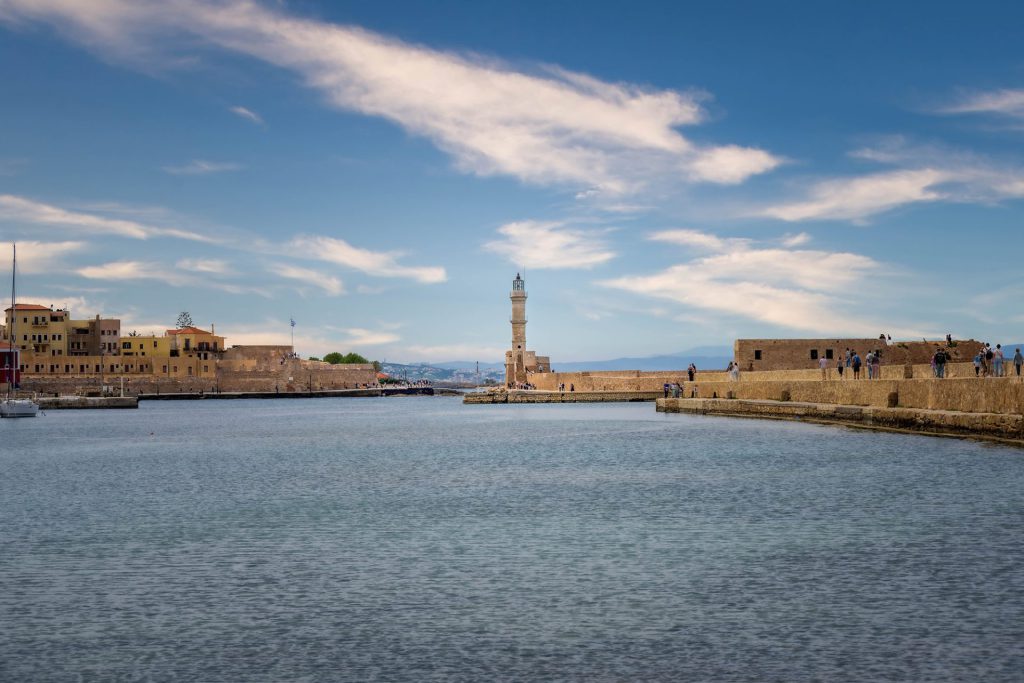
Do you still want to replace the sky in your photos? Then I heartily recommend Luminar Neo. With a few clicks, you can replace and edit the sky, including the reflection in the water. If you use the code GLNeo with Luminar Neo, you get 10% off your purchase.
Even quietly reading a book now and then, a drink in hand, carries its quiet magic. The gentle rustle of pages, the soft hum of the world outside, these small moments offer a kind of peace that’s easy to forget in our daily rush.
It had been long since we allowed ourselves the luxury of a truly lazy vacation. No packed schedules, early alarms, or lists of sights to check off. Just the freedom to be still, breathe, and enjoy simple pleasures: a good story, a soft chair, and the calming rhythm of time moving slowly.
Something healing is about that kind of pause—about letting go of the need to do and simply choosing to be.
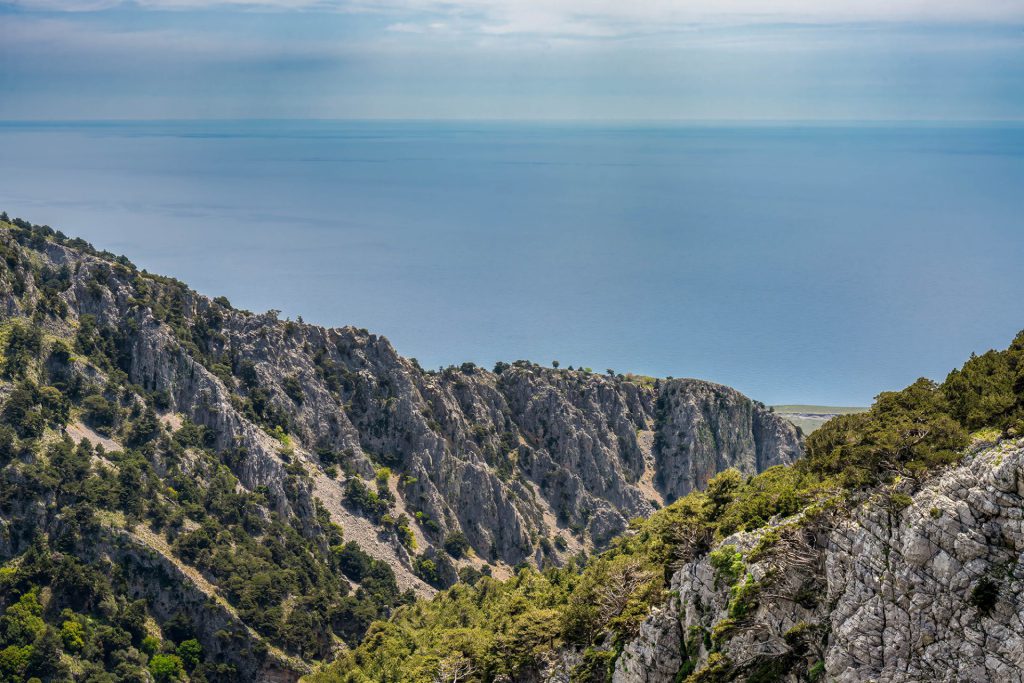
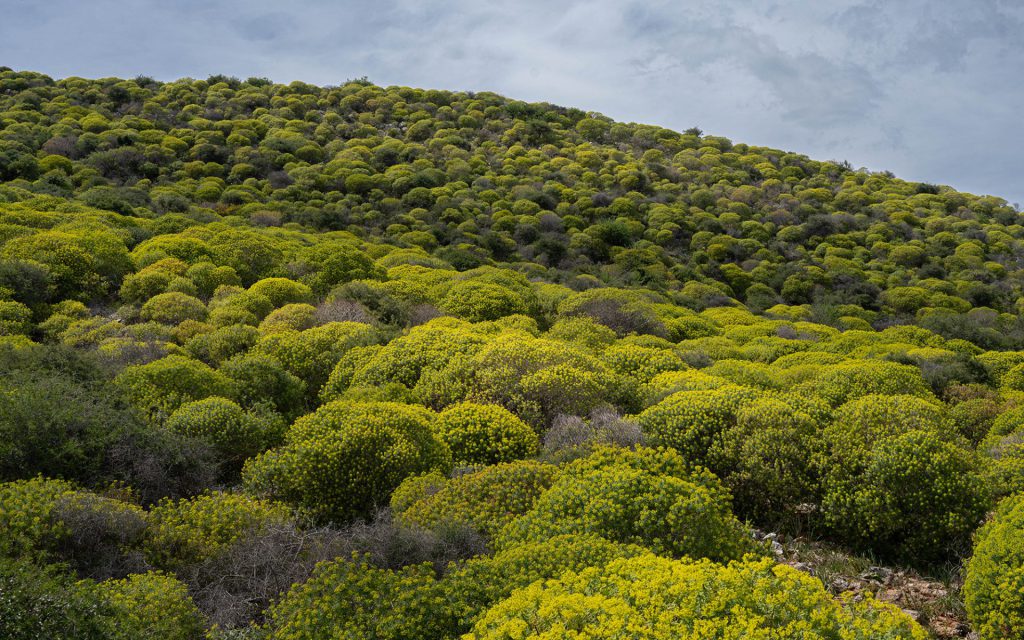
The healing power of photography
Photography is more than making beautiful images. It is a form of self-expression that brings peace and balance, especially in times of stress, sadness, or insecurity. During photo tours, we repeatedly notice how powerful photography is as a tool for mindfulness and emotional processing.
Photography as an outlet: Looking through the viewfinder, your attention immediately shifts away from deadlines, worries, and obligations. You focus on light, colour, and composition. For many photographers, this is a welcome break. Taking photos helps organise your thoughts and channel feelings. You look more intently at your surroundings—and therefore at yourself.
Conscious looking brings peace: Those who look slow down. You see small details—the change of light and nature’s rhythm. Everything comes to rest. That helps you release tension and approach frustration differently.
Post-processing as processing: You also find peace in post-processing. You retell your story, your way. You choose what to accentuate, soften or remove. That gives you creative freedom and a sense of control – something you sometimes miss in difficult times.
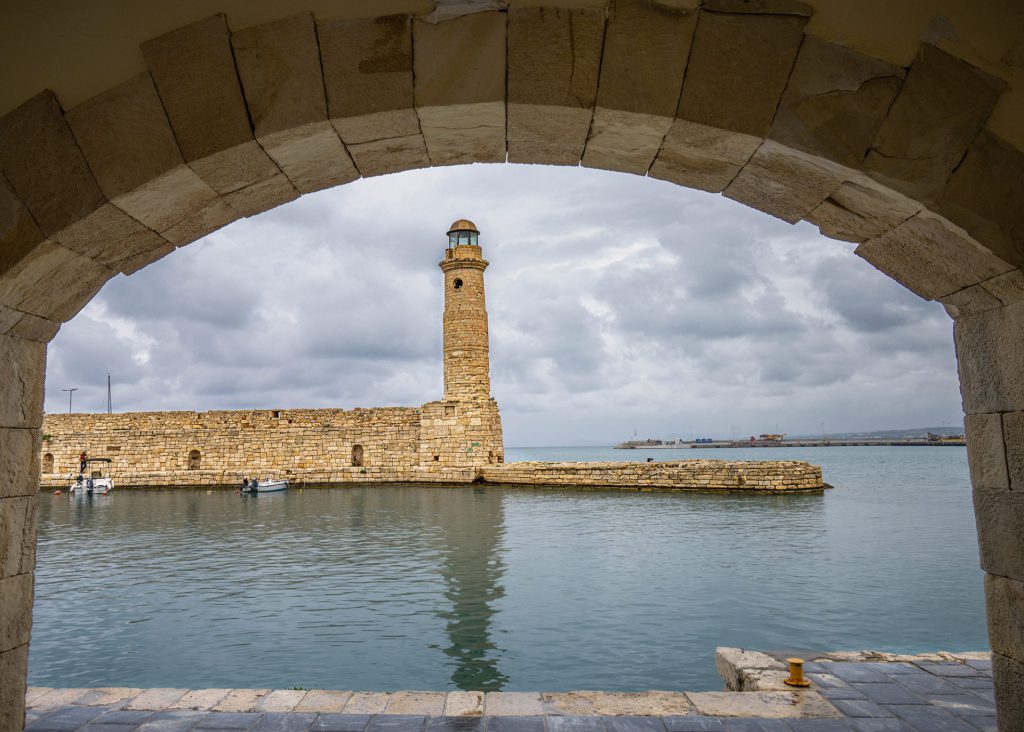
Tips for when your photo trip goes differently than planned
- Let go of expectations. Expectations offer no guarantee – flexibility does. Let go of the idea of THE perfect photo.
- Look with different eyes. Shift your focus: from significant to small, from landscape to detail, from far to near.
- Limitations as a framework. Fewer options force you to look and work more creatively.
- Slow down your pace. Take time to observe. The longer you are somewhere, the more you see.
- Be gentle with yourself. Not every trip has to be spectacular to feel valuable or produce beautiful images.
- Enjoy the process. Get out what’s in it, but without pressure. You don’t have to force anything.
More inspiration?
If you want more tips for travelling, go to my blog on travel photography
There is also my blog about timeless travel photography
In cities, you inevitably encounter a lot of architecture, so read my blog for info on architectural photography
Conclusion: Even the unexpected journey is worth it
No, they didn’t become iconic landscape photos. But they became images that have a lot of meaning for me. And perhaps that is the real purpose of photography: not to show what you wanted to see, but to capture what was there.
And next year? Next year, I may return to Crete with better light, more mobility, and renewed enthusiasm. But even if things turn out differently again, I know every trip tells a story that deserves to be captured.
Inspiration on the go. Whether photographing in your neighbourhood or travelling, take your camera as an ally. Not to perform, but to experience. Let the image imprint a moment of rest, wonder or processing. In this way, photography becomes a valuable companion on your inner journey.
Have you ever been on a photography trip that went completely differently from planned? What did you learn from it? Feel free to share your story in the comments – I’m curious!
Leave a reply